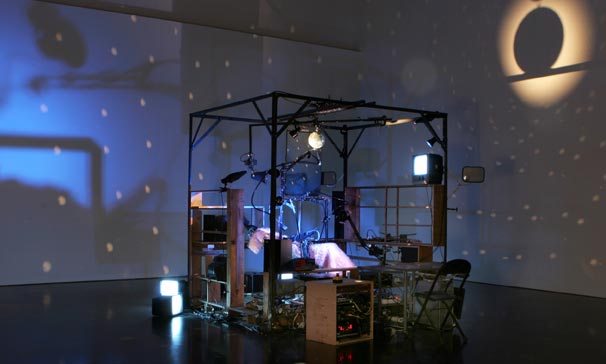
As Stevenson brilliantly explicates three sequences in Sleep (see his Chapter 1), so Ron Phelps gives us a brilliant theory of Light (see MM:SC), whose narrative thread, composed of many stories, unifies its discourse. Light’s shadowy characters and ambiguous plots represent the conscious staging of a year’s worth of dreams. The poet had wondered, he tells me, what kinds of daytime “reality” would find their way into this “sublunary” world? Like U and Need, Light is an episodic narrative. As the culmination of SOL it reflects both the illumination and the obscurity of the moon. Its original title, “Light at the End of the Darkened Room,” was shortened, first to “The End of the Darkened Room,” then to “Light,” as SOLUNA’s six alchemical titles came into focus: Sleep, O, Light, U, Need, A . . . A what? At this point MM did not yet know. For me Light is an awakening. As the initiation into LUNA it presages the wakeful dreams of U and Need. The sequence expresses the four phases of the moon: full (Light), crescent (U), waning (Need), dark (A). The classical epic speeds up narrative or slows it down; the time in which MM’s episodes occur never seems to be manipulated, though here the author measures out the reader’s temporal experience in proportion to an actual year. Thus in the first of three consecutive epyllia Time, we might say, has been miniaturized.
The full text of Light
Ron Phelps, "The Darkness of Light"
